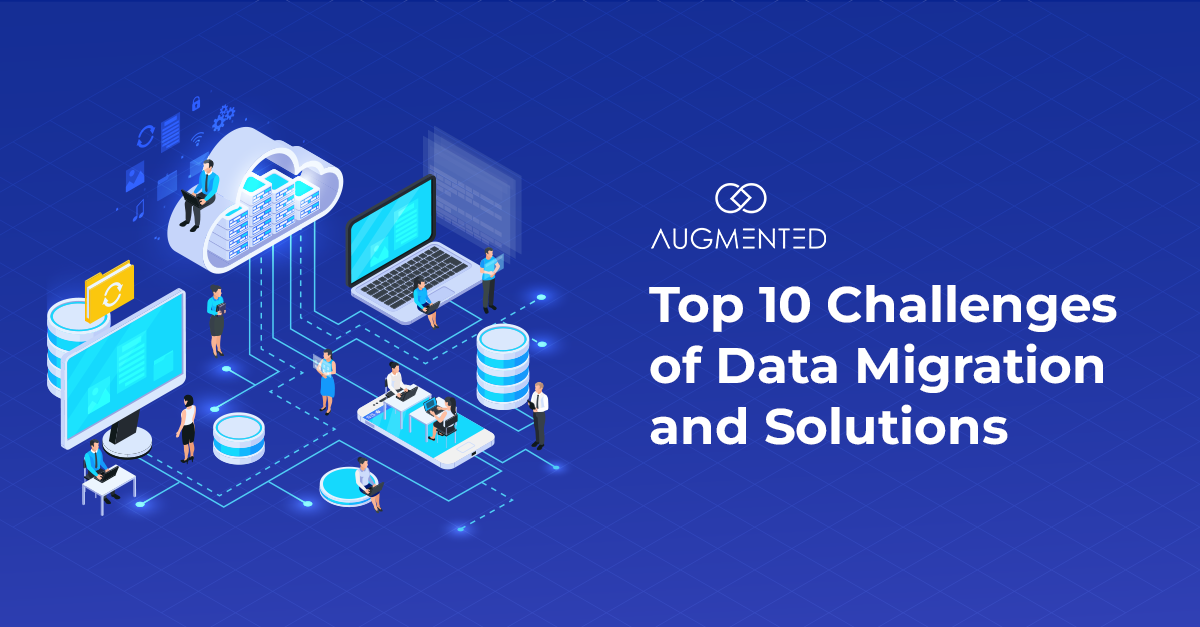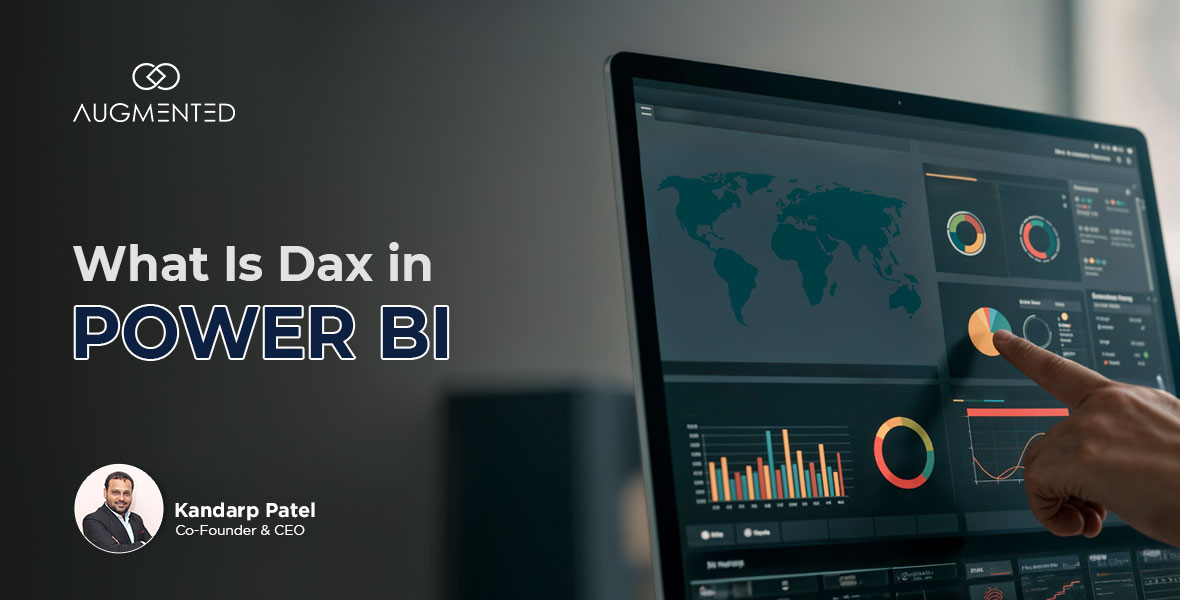Given that you’re here, I bet you’re either planning a data migration, already dealing with it, or at least thinking about it!
Whatever the case, data migration sounds easy on the surface: Export, Import, and done.
To be honest, that’s a myth! In reality, it’s a different ball game altogether.
- Corrupt files
- Security risks
- Downtime
- Data loss
- System crash
These are just a few of the challenges waiting for you!
In the worst case, a failed migration could cost you time, money, critical business data and a system that doesn’t function as expected.
Sounds like a nightmare, if you ask me! But don’t worry, I’ve got your back.
I’ll walk you through the top 10 data migration challenges that you may encounter while migrating your data. I’ve also included solutions to overcome those challenges for a successful migration.
Let’s get started.
Data Migration Challenges: Table of Contents
- 2025’s Top 10 Data Migration Challenges (and Their Solutions)
- What are the Top 10 Data Migration Challenges, and How to Overcome Them?
- Are You Ready to Migrate Your Data?
- Data Migration Challenges: FAQs
What are the Top 10 Data Migration Challenges, and How to Overcome Them?
Imagine moving to a new home. You pack everything carefully, and when you arrive, you find that a few boxes are missing and fragile items are broken. Now you are stuck fixing problems that could have been avoided with better planning!
The same is true of data migration. Without a proper strategy, data migration challenges could lead to serious disruptions, revenue loss and compliance risks.
That’s why identifying data migration pitfalls early and having a solid migration plan is essential.
Let’s address the common data migration problems and see how you can ensure that your migration goes off without a hitch.
Data Migration Challenge #1: Loss of Data
One of the most significant data migration problem is the risk of data loss. Imagine losing your most important data, such as customer data, financial records, or key business reports.
Data loss may lead to missed sales, unpaid invoices and even legal or compliance issues. Now, this can damage both your finances and your hard-earned reputation!
This can happen due to technical glitches, human errors, or compatibility issues between your source and target systems.
How to Prevent Data Loss During Migration?
- Perform an overall data backup before migration.
- Conduct a test migration in a controlled environment to identify potential data loss risks.
- Implement data validation checkpoints to ensure the accuracy of migrated data.
It is worth noting that losing even some of your most valuable data, you may lose your sales and jeopardize your entire business.
Data Migration Challenge #2: Significantly Long System Downtime
Extended downtime during data migration can disrupt business operations. In turn, this can lead to productivity losses, dissatisfied customers, compliance issues, and a major blow to your reputation.
Imagine your systems being down for hours or even days due to data migration.
What would happen?
Your employees would be unable to access information, customers would face delays, and operations would come to a standstill.
To prevent these disruptions, minimizing downtime is the key.
How to Prevent Prolonged Downtime During Migration?
- Plan the migration during quiet periods, i.e., off-peak hours, to minimize business disruptions.
- Use an incremental migration approach to reduce downtime by moving your data in smaller batches.
- Set up real-time monitoring to detect, realize, and resolve issues promptly before they scale.
By taking these steps, you can keep your operations running smoothly and avoid costly downtime while you move your data from one location to another.
Data Migration Challenge #3: Data Mapping Taking Longer Than You Thought
Data mapping is a critical process in data integration. Through this process, your company aims to align and transform data fields between different systems.
It’s like translating a book into another language. That means every word, phrase and sentence structure needs to be manually adjusted to make sense.
Now, if you have complex data structures, different formats and inconsistent models, the process becomes time-consuming and error-prone. Thus, manual intervention becomes necessary to resolve discrepancies. That means more delays and an increased risk of human errors.
How to Deal With Slow Data Mapping During Data Migration?
- Use automated data mapping tools to expedite the process and reduce manual work.
- Engage domain experts to ensure accurate data mapping.
- Allocate sufficient time and resources for comprehensive data mapping.
Without careful mapping, you may lose the most important information or misinterpret the data, causing confusion and inefficiencies down the line.
Data Migration Challenge #4: Data Governance Problems
Data governance is critical to data migration as it ensures data integrity, security, and compliance for the successful application of your data migration strategy.
However, if policies aren’t well-defined, they might pose serious risks to your business. These include security breaches, non-compliance with regulations, and data quality issues.
All of which may jeopardize trust and business continuity.
How to Strengthen Data Governance During Migration?
- Establish and convey clear data governance policies and protocols to ensure consistency and compliance.
- Encrypt sensitive data during the migration process itself to protect against unauthorized access.
- Regularly conduct audits of data access and usage to maintain compliance.
Data may be mishandled during migration without proper governance, leading to unauthorized access, loss, or corruption. To prevent these risks and maintain your data’s trustworthiness, confidentiality and accuracy during migration, you must establish strong data governance policies.
Data Migration Challenge #5: Unorganized Data Structure
Unorganized data in the source system poses numerous challenges during migration.
The lack of structure and consistency can lead to confusion among data handlers. That makes it difficult to accurately identify, extract and transfer relevant data.
Consequently, data may be transferred incompletely or with inaccuracies, potentially leading to duplicate records, data loss or corruption in your new system.
How to Handle Unorganized Data Before Migration?
- Conduct data cleansing and restructuring before migration to remove duplicates and standardized formats.
- Develop a data migration plan with clearly defined data mapping rules to ensure accuracy.
- Use data profiling tools to identify and rectify data quality issues before migration.
The absence of a coherent data organization might result in duplicate entries, data mismatches, and data mapping errors. By taking these systematic steps, you can rest assured that your data transitions seamlessly to your new system.
Data Migration Challenge #6: Lacking Data Protection Measures
Insufficient data protection measures during migration create vulnerabilities that compromise the security of sensitive information.
It’s similar to moving your valuable documents to a new space without locking them in secure boxes. If anyone accesses them during the move, you risk theft, leaks or even tampering with your data.
In the same way, hackers, malware, and insider threats can exploit weak security, leading to data theft, financial loss and manipulation of your data.
The absence of encryption, access controls, and data masking further heightens the risk. To prevent these risks, you must implement robust data protection strategies throughout your migration process.
How to Ensure Data Protection During Migration?
- Use strong encryption for data in transit and at rest to prevent unauthorized access.
- Implement strict access controls and authentication measures to limit data access to authorized users.
- Continuously monitor and audit the migration process for security vulnerabilities and suspicious activities.
By prioritizing data security, you can ensure a safe, compliant, and risk-free migration, protecting your valuable data assets.
Data Migration Challenge #7: Bringing Data Into the System
Did you even try fitting a square peg into a round hole? That’s what happens when your data from one system does not align with the structure of a new system.
Integrating data into the target system becomes complex and challenging when your target system has different data structures, storage mechanisms, or database technologies than the source system.
Without proper planning for this disparity, you may face issues, such as incorrect data mapping, validation errors, and data type conversion issues.
How to Overcome Data Integration Challenges During Migration?
- Use data integration middleware to bridge the gap between systems.
- Validate data compatibility and perform necessary transformations.
- Conduct data reconciliation to ensure all data is successfully integrated.
By addressing system and format differences, you can ensure a successful data integration without compromising the quality, functionality or reliability of your data.
Data Migration Challenge #8: Lack of Collaboration Among Teams
To be honest, data migration is not just an IT task. It requires input from your business stakeholders, end-users and technical teams.
When these groups fail to communicate, misunderstandings may arise about data requirements, priorities and expectations.
The result? A big blow to your data migration process.
For instance, your IT teams may not fully understand the specific business needs, leading to inadequate data mapping and transformation. Conversely, business stakeholders and end-users may not comprehend the technical constraints, resulting in unrealistic expectations.
This lack of coordination can lead to delays, data quality issues, and unsatisfactory outcomes, hindering your migration's overall efficiency and success.
How to Improve Collaboration Among Teams For Successful Migration?
- Establish clear communication channels among all involved team members.
- Create a dedicated migration team with representatives from different departments to ensure diverse inputs.
- Regularly update stakeholders on the migration progress and address concerns promptly to keep everyone aligned.
Thus you can avoid costly mistakes and streamline your migration process by fostering effective teamwork and open communication.
Data Migration Challenge #9: No Integration Of Processes
When data migration is considered a separate task, without considering how it fits with day-to-day operations, it can result in significant issues. The challenges could include:
- Data inconsistency
- Redundancies
- Workflow disruptions
None of which would benefit your business.
Plus, inadequate data validation and testing can result in inaccurate or incomplete data, making it difficult for your teams to make informed business decisions.
How Can You Ensure That Your Migration Aligns With Other Business Processes?
- Match your data migration objectives with overall business goals to avoid disruptions.
- Test the migrated data against specific business scenarios to validate its integrity.
- Ensure seamless integration of data migration with existing workflows.
Thus, you must strategically align your processes and business needs with data migration to avoid workflow disruptions, costly setbacks and better decision-making.
Data Migration Challenge #10: Finding an Expert Data Migration Service Provider
Selecting an appropriate data migration service provider is vital for a smooth and successful migration process.
What if midway through the migration process, you realize that some records are missing, others are duplicates, or some of your data is corrupt?
Your team will be stuck fixing errors (and waste their time) instead of focusing on what needs more attention. This is what happens when you choose the wrong provider.
Simply put, the wrong choice can lead to various issues and challenges.
- Under-experienced providers may lack the expertise to handle complex data structures, resulting in data loss or corruption during migration.
- Insufficient planning and coordination may lead to project delays and increased costs.
- Security and compliance may be compromised if the provider lacks robust data protection measures.
How to Choose the Right Data Migration Provider?
Picking the right provider is crucial to avoid these risks and ensure a seamless and stress-free data migration experience.
- Industry-specific Experience: Look for a provider with proven experience in data migration projects similar to yours.
- Security Measures: Make sure that they follow strict data protection protocols, including encryption and compliance with industry best practices.
- Migration Plan: A reliable provider should offer you a clear migration strategy, risk assessment and contingency plans.
- Proven Track Record: Check if they’ve successfully handled large amounts of data and complex migrations.
- Customer Reviews: Check for customer satisfaction reviews and ratings for a reliable migration process.
So, if you want to avoid costly errors, reduce risks and want a secure data migration experience, select a reliable and skilled provider.
Are You Ready to Migrate Your Data?
And that’s it! With our entire discussion, one thing is clear you cannot take data migration lightly.
A single misstep can result in data loss, security risks, unexpected downtime, etc.
Therefore, you also need the right partner for such a critical organizational change. (And you don’t want any novice to handle that!)
That’s where Augmented Systems comes in!
Our vetted experts have successfully handled several migration projects across industries. We know exactly what works and what doesn’t.
Now, the decision is in your hands, whether you want to risk your valuable data or want a smooth migration.
Having said that, if you want any help with your migration project, we’re here to help.
Happy Migration!
Data Migration Challenges: FAQs
1. What is data migration?
Data migration is the process of moving your data from one source, location, or format to another. You can transfer your data to a new system, platform, database or cloud environment.
2. What are the four R’s of migration?
The four R’s of migration are:
- Rehost
- Refactor
- Rearchitecture
- Rebuild
Each of the above factors represents a different approach to moving your applications and data to a new environment.
3. How important is data migration?
Data migration is important as it allows you to upgrade your systems, improve your business performance and ensure the integrity of your data.
A well-executed data migration helps prevent data loss, downtime, and security breaches, thus ensuring a seamless migration.
4. What are the five advantages of data migration?
The most important benefits of data migration are:
- Improved performance
- Better data security
- Cost savings
- Scalability
- Data Accuracy





